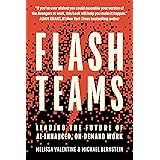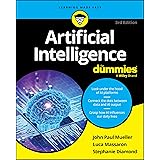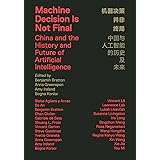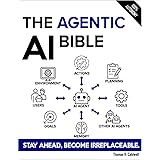The rapidly evolving landscape of artificial intelligence has introduced a paradigm shift with the emergence of Generative AI, a transformative technology that fundamentally redefines how digital content is created and iterated upon. As extensively introduced in the accompanying video, Generative AI models are engineered to produce novel outputs—ranging from sophisticated text and intricate imagery to evocative music and dynamic video—distinctly setting them apart from traditional AI systems focused primarily on analytical or classification tasks. This innovative capability positions Generative AI as a cornerstone for future advancements across numerous industries, catalyzing unprecedented levels of computational creativity and efficiency in workflows. Understanding its core mechanisms and far-reaching implications is therefore crucial for professionals navigating this technological frontier.
Deconstructing Generative AI: Beyond Classification
Traditional artificial intelligence often excels at tasks requiring analysis, categorization, or prediction based on existing data; consider image recognition systems classifying objects or recommendation engines suggesting products. In stark contrast, Generative AI models are architected to synthesize entirely new data instances that were not present in their training datasets, embodying a form of artificial creativity. This distinction is critical because it moves AI from purely interpretative roles into proactive, content-producing functions. Such models learn the underlying patterns, structures, and statistical regularities within vast datasets to then generate coherent and contextually relevant new material, demonstrating a remarkable capacity for abstraction and synthesis. The ability to create original artifacts represents a significant leap forward in AI capabilities, influencing everything from digital media production to scientific research.
The genesis of Generative AI’s creative prowess lies in its architectural foundations, frequently leveraging deep learning techniques and massive computational resources during training. Unlike discriminative models that learn to map inputs to labels, generative models learn to map latent space representations to data instances. This sophisticated training process allows them to internalize the complex relationships and stylistic nuances inherent in the data they consume. Consequently, when prompted, these models can effectively ‘imagine’ and construct outputs that align with the learned distributions, often exhibiting a level of originality that was once exclusively attributed to human intellect. For instance, a model trained on millions of prose examples can articulate complex narratives, or an image generation system can render photorealistic scenes from a few descriptive phrases.
The Operational Mechanics: How Generative AI Functions
The underlying processes governing Generative AI’s ability to create are multifaceted, involving several intricately linked steps, as highlighted in the video’s explanation of image generation. Initially, comprehensive data collection and meticulous learning are paramount, where models like DALL-E are exposed to immense datasets comprising images meticulously paired with descriptive text. This rigorous training phase enables the model to internalize the semantic associations between visual elements and linguistic constructs, facilitating a deep understanding of object characteristics, stylistic attributes, and contextual relationships. The sheer scale and diversity of this input data directly correlate with the model’s eventual versatility and accuracy in generating varied content, representing a foundational stage in developing robust generative capabilities.
Neural Networks and Transformer Architectures
Central to Generative AI’s operational framework are advanced neural network architectures, most notably the Transformer model, which has revolutionized natural language processing and image synthesis. When a user input, such as “A cat wearing sunglasses,” is provided, the Transformer processes this textual prompt by breaking it down into discrete tokens and then analyzing the intricate relationships between them. These models utilize self-attention mechanisms to weigh the importance of different words in the input sequence, effectively determining how elements like “cat” and “sunglasses” should be semantically integrated. This sophisticated attention mechanism allows the AI to develop a coherent conceptual understanding, ensuring that the generated output logically incorporates all specified components, thereby producing contextually appropriate and visually cohesive results. The ability of Transformers to handle long-range dependencies in data is crucial for generating high-quality, complex content.
Tokenization, Contextual Embeddings, and Iterative Refinement
The input prompt undergoes tokenization, where it is segmented into smaller units known as tokens, which can represent words, subwords, or even characters. Each token is then transformed into a numerical vector, or embedding, capturing its semantic meaning and contextual relationships within the input sequence. The AI processes these embeddings to understand how elements like “sunglasses” relate to “cat” and where they should logically appear within the generated image, creating a rich contextual understanding. This iterative process of refinement is further augmented by a crucial feedback mechanism and reinforcement learning. If the initial generated output deviates from user expectations—for example, if the sunglasses appear incorrectly positioned—the user’s feedback becomes an invaluable data point. This feedback is then utilized by the model through techniques like Reinforcement Learning from Human Feedback (RLHF), allowing the AI to adjust its internal parameters and improve the fidelity and accuracy of subsequent generations. This continuous learning loop ensures that models become progressively adept at fulfilling complex and nuanced prompts.
The Role of Data Scientists and Parametric Scaling
The development and refinement of Generative AI models heavily depend on the expertise of data scientists and machine learning engineers, who are responsible for curating vast training datasets and meticulously defining model parameters. These professionals strategically select and preprocess data, ensuring its quality, diversity, and relevance to the model’s intended generative tasks. They also design and tune the complex algorithmic structures, often encompassing billions of parameters, which are essentially the configurable settings that guide the AI in processing information and synthesizing outputs. For instance, advanced models like GPT-3 leveraged 175 billion parameters, while subsequent iterations and competitive models now operate with significantly larger configurations, illustrating the immense scale of these systems. The precision with which these parameters are set directly influences the model’s capacity to generate accurate, varied, and truly original content, pushing the boundaries of what is computationally feasible in creative endeavors.
Expansive Applications of Generative AI Across Industries
Generative AI’s utility transcends theoretical interest, manifesting in practical applications that are reshaping numerous sectors, extending far beyond the content creation discussed in the video. Its capacity to produce synthetic, yet highly realistic, data is a game-changer in areas where real data is scarce, sensitive, or costly to acquire. This enables accelerated research, robust model training, and enhanced privacy protections by allowing development without direct reliance on personally identifiable information. The pervasive influence of these models highlights their transformative potential, moving beyond mere augmentation to foundational shifts in operational paradigms and creative processes.
Pioneering Content Creation and Digital Media
In content creation, Generative AI tools such as GPT-4 are revolutionizing how text-based materials are produced, automating the drafting of articles, reports, marketing copy, and even complex literary works from minimal prompts. This significantly accelerates production cycles, allowing human creatives to focus on higher-level strategic and editorial tasks rather than repetitive initial drafting. Beyond text, AI models like DALL-E have profoundly impacted art and design, enabling the generation of unique visual assets, concept art, and product designs with unprecedented speed and variety. These tools empower designers to explore a multitude of aesthetic directions rapidly, fostering a new era of computational creativity and personalized artistic expression that was previously unimaginable in terms of scale and scope. The integration of such technologies fundamentally changes the creative workflow, reducing barriers to entry for complex design tasks.
Advancements in Music, Audio, and Healthcare
The realm of music and audio engineering is also experiencing a profound transformation, with AI capable of composing original scores, generating soundscapes, and even replicating vocal performances with remarkable fidelity. This opens new avenues for musicians to experiment with genres, create background music for various media, and efficiently produce audio content, significantly streamlining post-production processes. In healthcare, Generative AI models offer powerful capabilities for simulating disease progression, generating synthetic medical images for training diagnostic AI, and accelerating drug discovery through novel molecular design. By creating realistic, yet non-identifiable, patient data, these models enhance research insights, facilitate the development of personalized treatment plans, and provide critical support for clinical trials, thereby accelerating medical breakthroughs and improving patient outcomes in numerous complex disease areas. The ethical considerations around synthetic data generation, particularly in patient privacy and data integrity, remain a critical focus for research and deployment.
Innovation in Software Development and Scientific Research
Furthermore, Generative AI is increasingly deployed in software development for tasks such as code generation, automatic debugging, and test case creation, thereby enhancing developer productivity and expediting product release cycles. These intelligent assistants can translate natural language descriptions into functional code snippets, allowing engineers to focus on architectural design and complex problem-solving. In scientific research, generative models are applied to simulate complex physical systems, design new materials with desired properties, and even hypothesize novel scientific theories from large datasets. For example, in materials science, AI can propose new molecular structures for catalysts or superconductors, drastically reducing the experimental time and cost associated with traditional trial-and-error methodologies. This extends the scope of scientific inquiry, allowing researchers to explore vast solution spaces with unparalleled efficiency and precision, fundamentally changing discovery pipelines.









